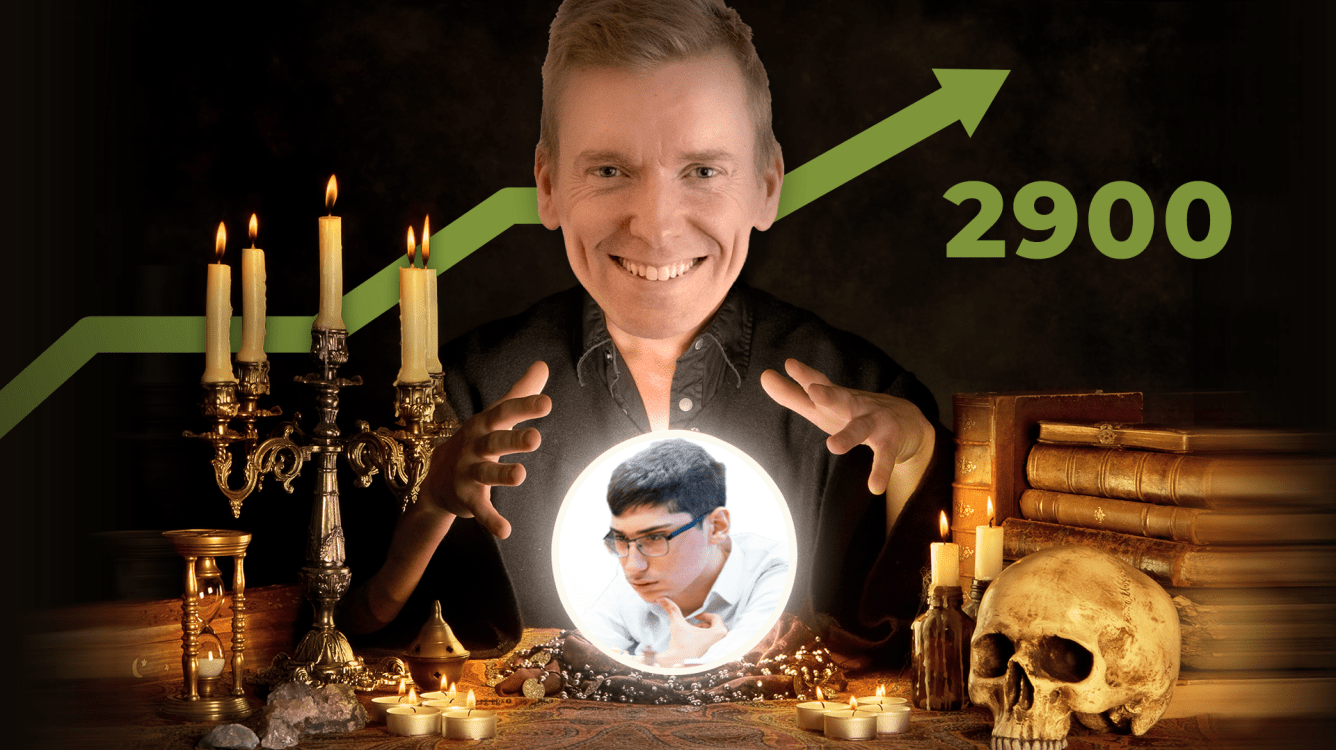
Predicting The Future Of Chess Prodigies
Other than a world championship match, there is arguably nothing that excites the chess world more than a promising young player. From 1956, when 13-year-old future GM Bobby Fischer's "Game of the Century" was reprinted around the world and began a legend that endures to this day, to 2021, when 18-year-old GM Alireza Firouzja rocketed to a 2800 rating faster than anyone ever before, young masters have always fascinated the chess public.
We saw this most recently at the 44th FIDE Chess Olympiad. The 16-year-old GM Gukesh D won eight straight games, including a win against former world champion contender GM Fabiano Caruana; 18-year-old GM Erigaisi Arjun went undefeated, prevailed over GM Leinier Dominguez (2754 FIDE classical), and increased his rating by 20 points; and youngsters led by 17-year-old GM Nodirbek Abdusattorov brought the Uzbekistan team a gold medal.
So where do we see today's best juniors ending up in the next few years? Just how good will Firouzja, Gukesh, Erigaisi, Abdusattorov, and other strong juniors become? Check out the numbers below to find out! The stats are brought to you by ChessGoals.com, my chess improvement project for helping chess players reach their rating goals.
Overall Analyses
How Do Top Juniors Progress?
The very best juniors tend to make progress about two years faster than a typical top junior. For example, the average player on our list reaches a 2300 rating by age 13, but the top 10 percent get there by age 11. And the 2500 threshold to become a grandmaster tends to arrive by age 16 on average, but age 14 for the top 10 percent.
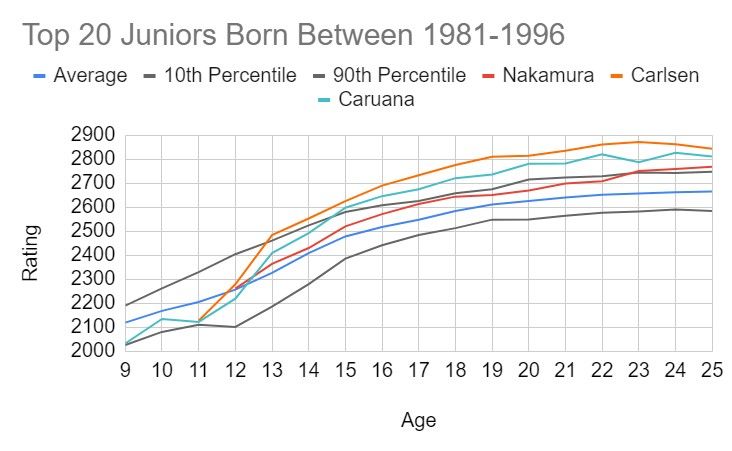
The chart adds some of today's best players for comparison. We can see that GM Magnus Carlsen is incredibly impressive. He reached the top 10 percent at age 13, and by age 17, he was blowing away the field of past juniors. GM Fabiano Caruana also has had an impressive run, crossing the 10th percentile at age 15 and never looking back. Popular chess streamer GM Hikaru Nakamura didn't start quite as fast, but by age 17, he was following pretty closely to the top 10 percent line.
When Do Top Juniors Plateau?
In an analysis of players rated between 400 and 2400, a player's rating is the best predictor of how many points they might gain in a year. It is even more important than the time spent on chess or a player's age. This scatterplot shows the player's rating on the x-axis and how many points they gained in that year on the y-axis.
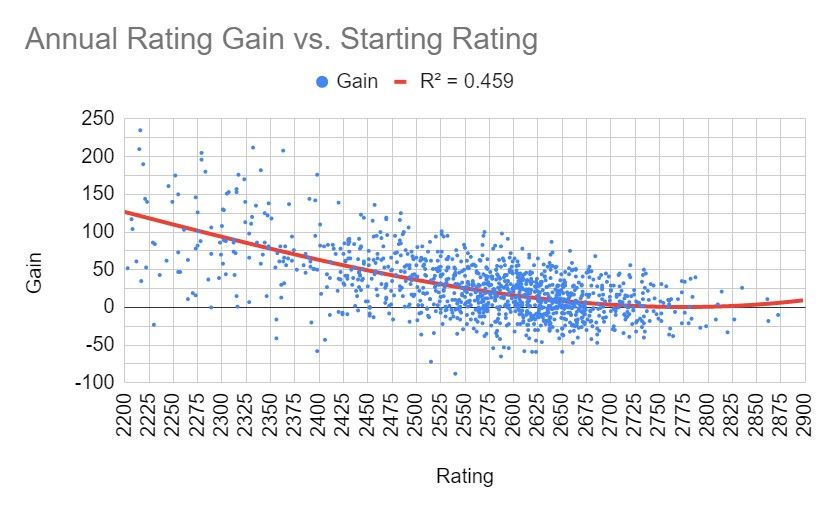
Predictions For Current Juniors
One practical effect of the above chart is we can, in just a couple of steps, use rating alone to get a fairly decent estimation of how a player might progress further. The process involves finding players with a similar rating at the same ages and extrapolating from there.
With this in mind, let's examine the top three juniors from the top-20 live ratings in detail, and then proceed to predict rankings four through 10. As of 8/31/2022, here are the top players:
- Alireza Firouzja (2778 classical)
- Arjun Erigaisi (2728)
- Gukesh D (2726)
- Nodirbek Abdusattorov (2713)
- Vincent Keymer (2693)
- Hans Niemann (2688)
- Praggnanandhaa R (2685)
- Andrey Esipenko (2678)
- Nihal Sarin (2677)
- Shant Sargsyan (2661)
Here's how the top three here compare to previous top juniors:
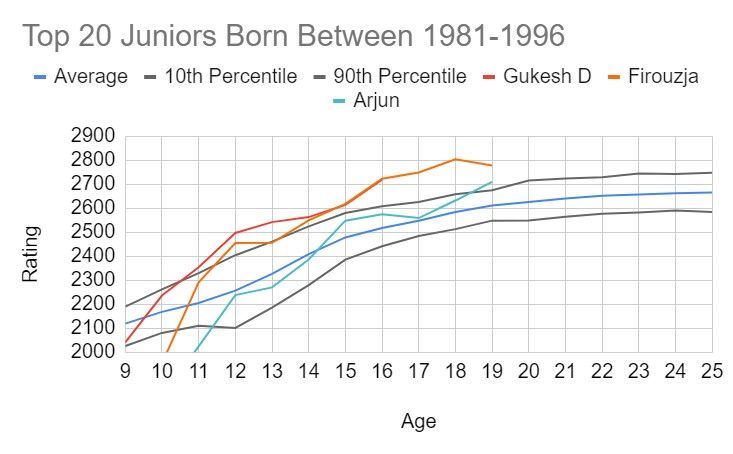
Gukesh is matching the pace of current superstar GM Alireza Firouzja. Erigaisi had a slow start, but his recent success at the 44th FIDE Chess Olympiad 2022 has put him in the top 10th percentile.
Now it's time to compare these players to their most similar past juniors. To determine a player's closest comparisons, I evaluated past players with the closest ratings at each age, ranging from five years prior through the current age. The current age is weighted the most, and each year prior has a bit less weight in the formula to find the comparable players. The five most similar players are then used to predict the current juniors' ratings at age 25.
Arjun Erigaisi
Currently Rated 2728, Age 18. Age 25 Rating Prediction: 2764.
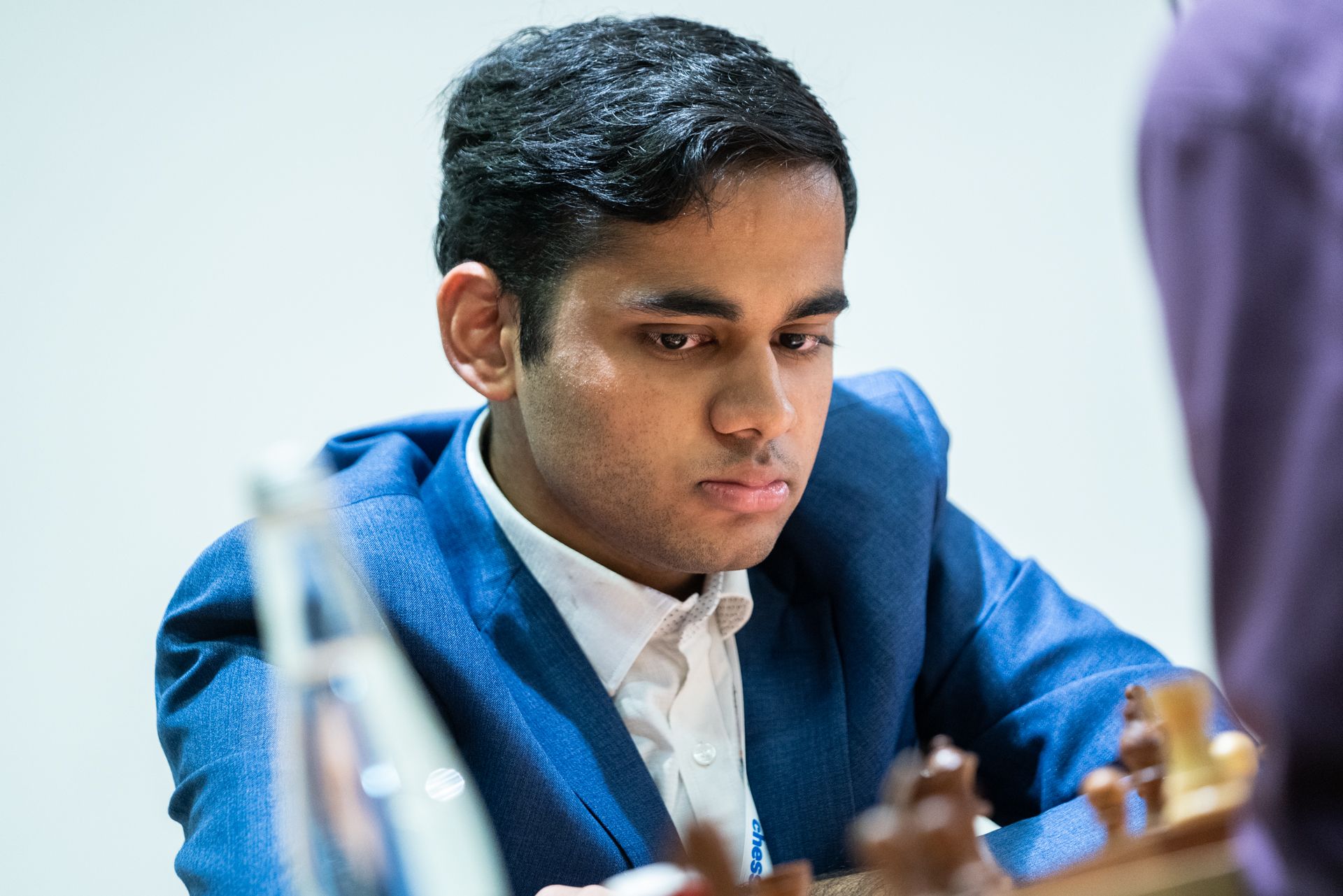
Erigaisi's most similar juniors are:
These players gained an average of 36 points over the next six years, or about six points per year. They also plateaued around age 24 on average. Based on Erigaisi's live rating of 2726, age of 18, and past trajectory, his predicted rating at age 25 is 2764.
Gukesh D
Currently Rated 2726, Age 16. Age 25 Rating Prediction: 2780.

Gukesh's most comparable juniors are the cream of the crop from the data set:
- Magnus Carlsen
- Sergey Karjakin
- Anish Giri
- Wesley So
- Radjabov
These players gained 54 points between ages 16 and 25. Four of the five have been over a 2800 rating at some point in their careers, as has number six on the list, Caruana (2851 peak). It would not be surprising to see Gukesh reach the world's top three or even claim the world championship.
Alireza Firouzja
Currently Rated 2778, Age 19. Age 25 Rating Prediction: 2829.
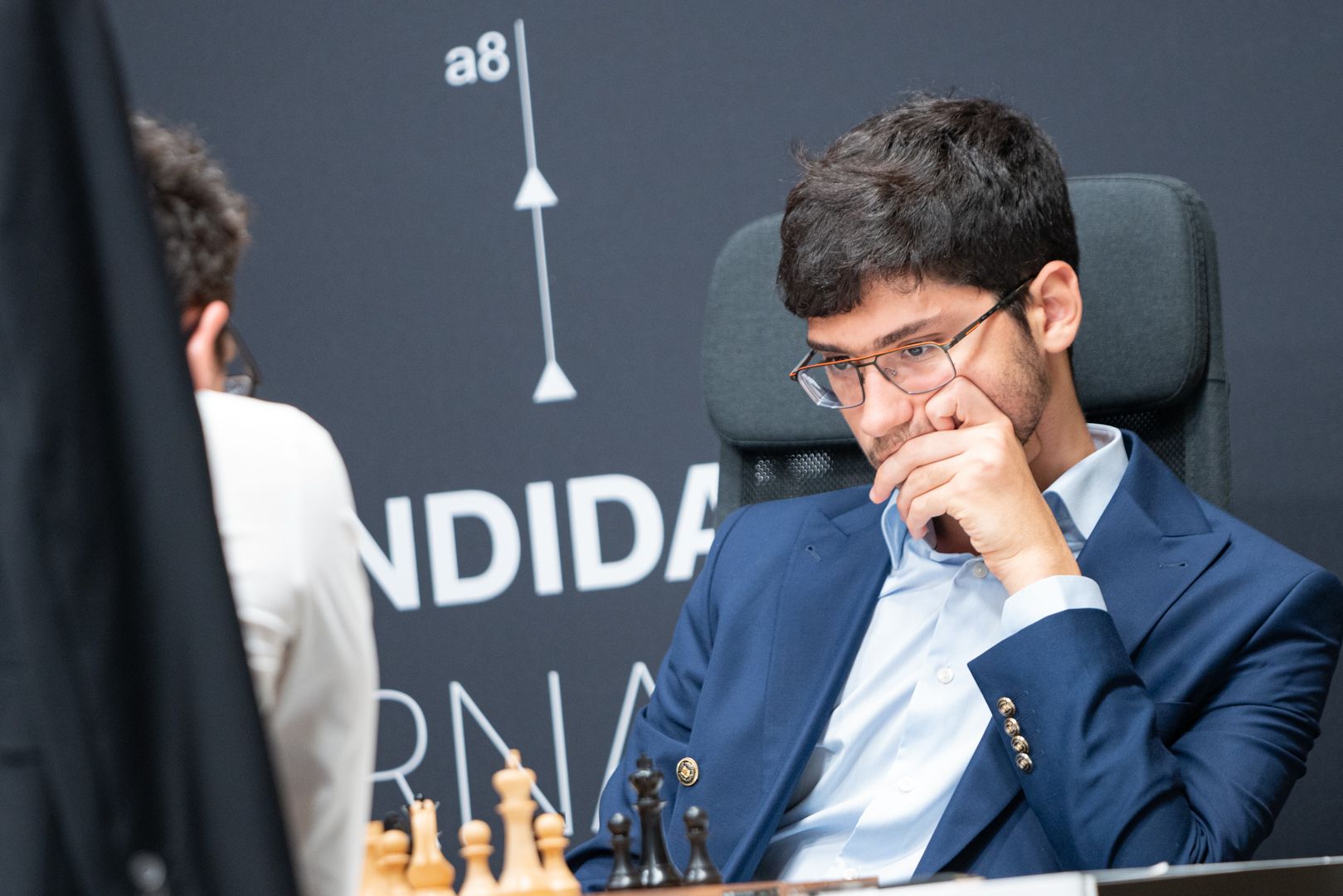
What can we say about Firouzja? He has taken the chess world by storm and was recently over 2800 at age 18. His most comparable players are in the same area as Gukesh's, except Firouzja's pace is outdoes all of them besides Carlsen.
- Carlsen
- Giri
- Fabiano Caruana
- Karjakin
- Radjabov
In the next two years, we should see Firouzja climb to a consistent 2800+ rating, reaching 2829 by age 25. He will likely be in the top three in the world for the next decade. Due to Firouzja's already high rating, it's more difficult for him to gain more rating points than some of the other juniors, and yet we expect him to gain a few more points in the coming years than Erigaisi.
Full List Of Juniors
Here are the remaining predictions by age 25 for the current top 10 juniors.
Abdusattorov (2713) → 2787
Keymer (2693) → 2757
Niemann (2688) → 2729
Praggnanandhaa (2685) → 2777
Esipenko (2678) → 2725
Nihal (2677) → 2761
Sargsyan (2661) → 2684
Methodology
For this project, I grabbed all players from the top-20 January Junior FIDE rating lists born between 1981 and 1996. Next, I logged each player's annual ratings between ages nine and 25 and included all FIDE ratings over 2000. The final data set contains 108 players and 1,420 ratings. Here's a partial snapshot of the data:

Conclusion
Based on the data, I expect Firouzja to be in the top two or three players with a rating of around 2830. Gukesh, Praggnanandhaa, and Abdusattorov could all be in the top five by the time they are 25, while Nihal and possibly Keymer look poised to join the top 10.
What do you think of the projections? If you want to increase your rating, please check out the free data-backed ChessGoals.com study plans for chess improvement.








